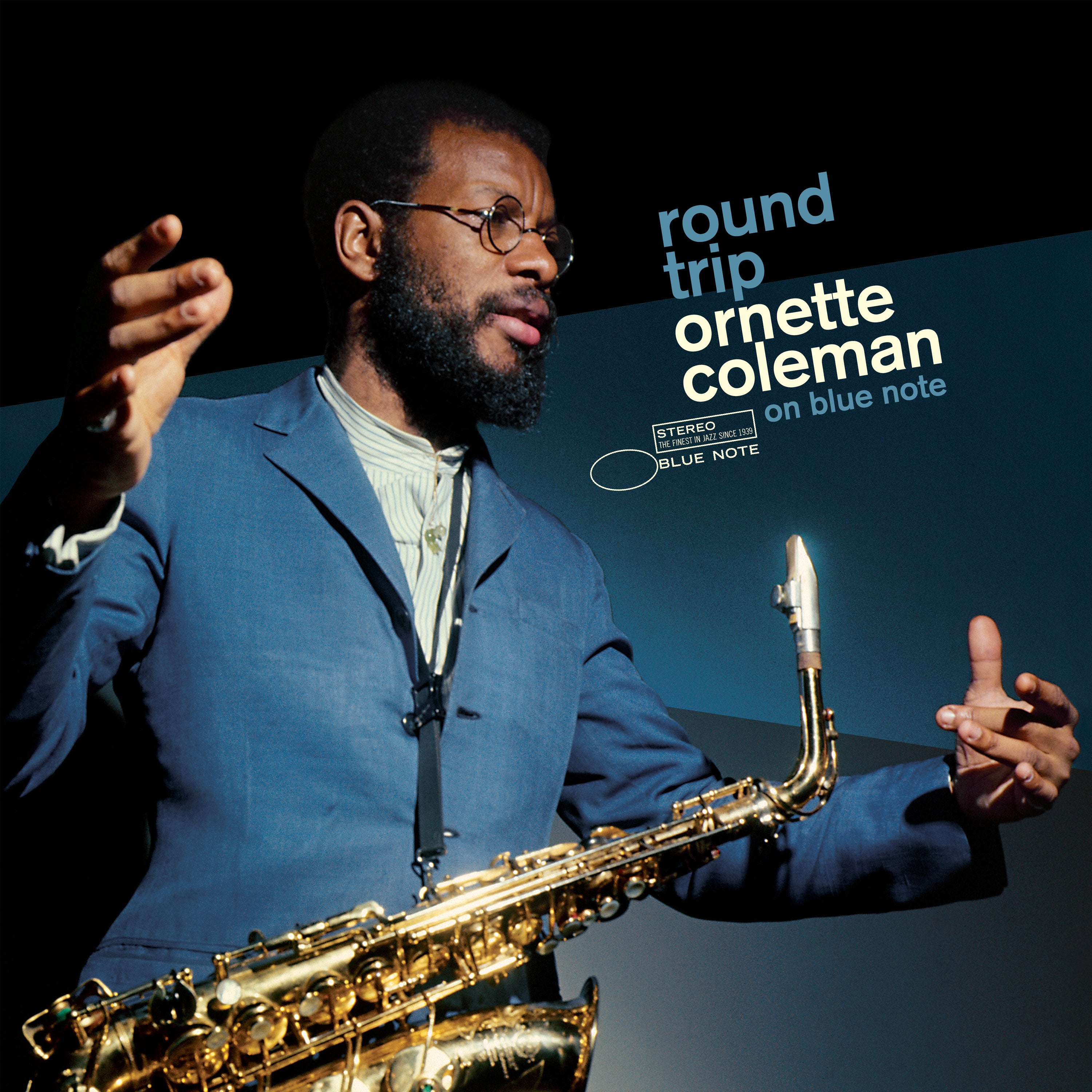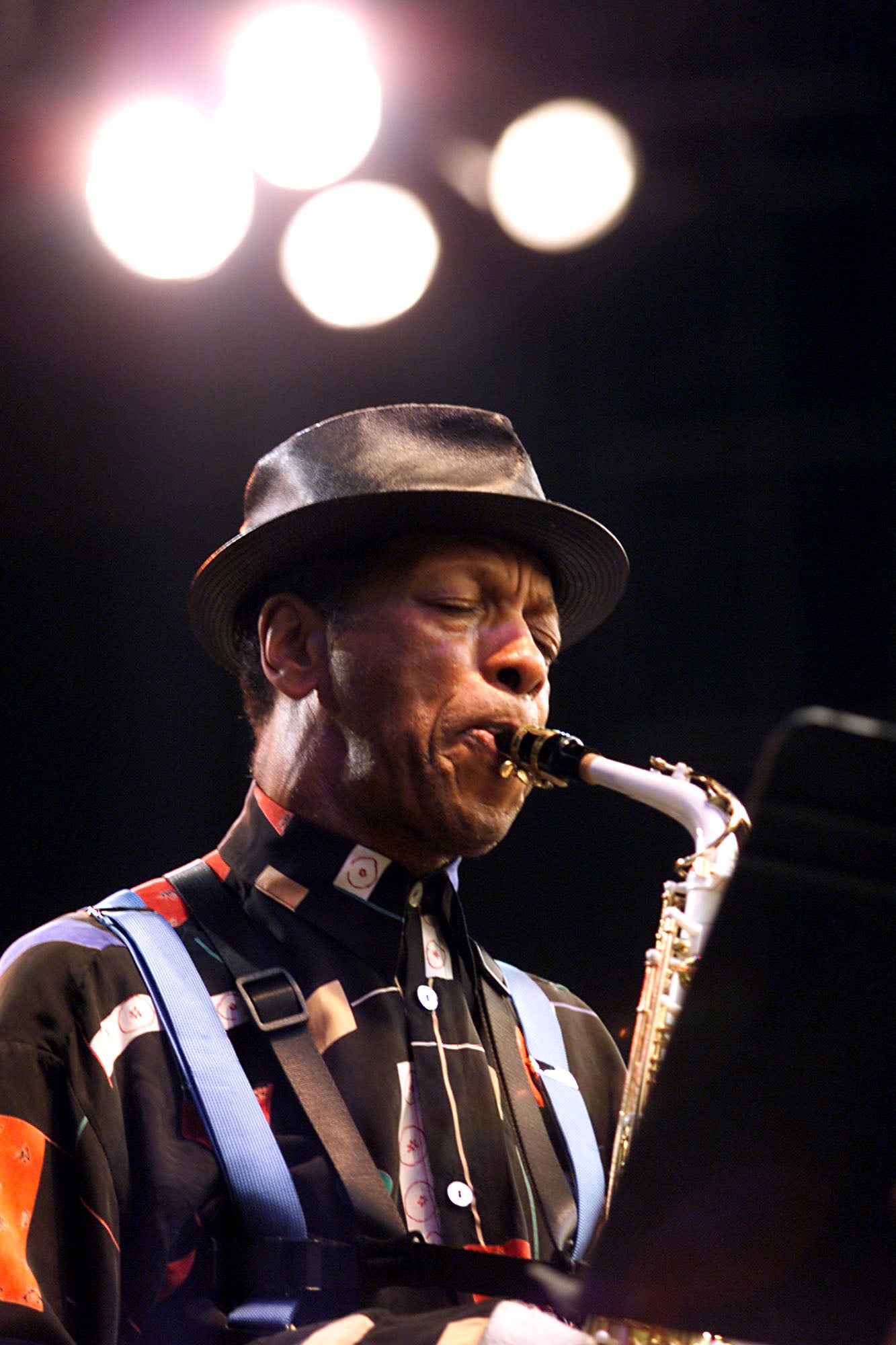Pushing beyond the confines of jazz: Revisiting Ornette Coleman
In the Sixties, the saxophonist carried out a paradigm shift in jazz. A new album collection tries to trace that change, writes Andy Beta

Your support helps us to tell the story
From reproductive rights to climate change to Big Tech, The Independent is on the ground when the story is developing. Whether it's investigating the financials of Elon Musk's pro-Trump PAC or producing our latest documentary, 'The A Word', which shines a light on the American women fighting for reproductive rights, we know how important it is to parse out the facts from the messaging.
At such a critical moment in US history, we need reporters on the ground. Your donation allows us to keep sending journalists to speak to both sides of the story.
The Independent is trusted by Americans across the entire political spectrum. And unlike many other quality news outlets, we choose not to lock Americans out of our reporting and analysis with paywalls. We believe quality journalism should be available to everyone, paid for by those who can afford it.
Your support makes all the difference.If you asked jazz firebrand Ornette Coleman about his music and philosophy, he probably would have referred you to an obscure music book, The Harmolodic Theory. First cited in his own liner notes to his 1972 symphonic album Skies of America, the alto saxophonist and composer was also the book's author. Only it was never published as a book and largely existed in Coleman’s head. Such elusiveness illustrated Coleman’s own music and life outlook. His melodies and compositions embodied whimsy and cosmic consciousness, all with an ever-curious, childlike mentality, right down to the fart jokes. “Sound is as free as the gas that passes through your butt,” he once told writer Philip Clark.
Starting with a sprint of albums made for Atlantic Records across a breathless 17-month period from May 1959 through December 1960, Coleman seemed to arrive on New York’s jazz scene fully formed, like Athena from Zeus’s split forehead. Albums like The Shape of Jazz to Come and Free Jazz – as dizzyingly complex or curiously hummable, unhinged and considered as they might be – were full of new possibilities. Even a detractor like Charles Mingus described Coleman’s playing succinctly in DownBeat magazine in 1960: “organized disorganization, or playing wrong right.” That ability to invert expectations inspired generations of jazz composers and rockers alike who arose in his wake. Lou Reed and Patti Smith brought such sensibilities to their own work, as did other New York punks, and critic Ben Ratliff could even hear an echo of Coleman’s horn in Bob Dylan’s “plaintive crying rasp”.
But after that inaugural run of Atlantic albums, Coleman was in the wilderness. No tours, shows, no recordings. Legends abound of informal jams with fellow icons Cecil Taylor and Albert Ayler. Even a titan like John Coltrane sought to study with him, helping lead to his own creative breakthrough. And Coleman in turn sat in, unrecorded alas, with Coltrane’s mighty quartet during that time. Taylor, Ayler and Coltrane have all since died, but their estates continue to keep their legacies current with a steady stream of archival releases.
That hasn’t been the case with Coleman. Since his death in 2015, there has been little music to emerge posthumously. Instead, upcoming box sets like Genesis of Genius(Craft Recordings) simply repackage older albums with no new material. Same goes for Round Trip: Ornette Coleman on Blue Note, a recent offering (released as part of the label’s Tone Poet vinyl series) that documents a strange time for Coleman. What should have been a pairing of a legend with the greatest jazz label of the 20th century instead led to uneven results and some disparaging reviews as both the man and label were undergoing great change. It’s a handy, if pricey, box set of five albums Coleman made as a leader (plus a rare album as sideman), over four years in the mid-to-late 1960s, at times anticipating Coleman's breakthroughs still to come.
After years of being the driving force behind Coltrane, you can hear Jones and Garrison strain against Coleman’s dexterous music like heavyweight boxers taking up roller-skating instead
Coleman’s paradigm shift in jazz didn't occur in a vacuum. He grew up in a deeply segregated Fort Worth, Texas, and while his schooling put him in early contact with future collaborators and players ranging from King Curtis and John Carter to Charles Moffett and Dewey Redman, it happened because IM Terrell was the only black high school in town. “There was an urgency and dead seriousness in Ornette’s music that said things weren’t going to be about Jim Crow, or a resigned black man or West Coast cool anymore,” his friend and fellow Texan, trumpeter Bobby Bradford, told Coleman biographer Maria Golia. That quiet resolve can be heard from his earliest recording dates. The Greensboro, NC, sit-ins started in 1960, months before he recorded This is Our Music, and by the time of the audacious celebratory tumult of Free Jazz, Freedom Riders were already being bloodied.
Aside from such societal pressures, the strain of the scene also weighed on Coleman and band. His legendary quartet – trumpeter Don Cherry, bassist Charlie Haden and drummer Ed Blackwell– all struggled with heroin habits. Nightclub life was unhealthy and promoters were crooked, and even critically hailed recordings weren’t covering the bills. After staging his own concert at Manhattan’s Town Hall in 1962, Coleman fell silent for nearly four years.

When he emerged with his new trio in Stockholm in December 1965, it marked a welcome return, and Blue Note presented two volumes of At the Golden Circle Stockholm. His new trio featured double bassist David Izenson and drummer Charles Moffett. While other saxophonists of his era like Coltrane or Sonny Rollins were prone to extended peregrinations, Coleman’s solos were usually coiled and compact wonders. But Moffett’s ride cymbal work and shouts on Faces and Places not only levitate the bandstand but provide plenty of Texas-size space for his friend to toggle between bop and Texas blues. Coleman roams at his leisure, adding in playful quotes of other tunes along the way. Izenson remains one of jazz’s more curious characters, a future PhD in psychotherapy and co-founder of Potsmokers Anonymous, and a worthy foil for Coleman. With his deft uses of bow and plucking, he shadows and offers stunning counterpoint, from the drunken bumblebee zags around “Morning Song” to a solo that makes “Dawn” one of the most breath-halting moments in Coleman’s catalogue.
The second night introduces previously unglimpsed iterations of Coleman. On “Snowflakes and Sunshine,” he careens between two new instruments, trumpet and violin. Squeaking and rheumatic, Stephane Grappelli he’s not. Self-taught on both, Coleman played violin left-handed, as if to ensure that he wouldn’t fall back on any cliches in his playing. In hitting all four strings at once, biographer John Litweiler noted, Coleman “(bypassed) not only the jazz tradition, but western musical traditions together”. Noisy new vistas came into view, as composer Laurie Anderson once recalled: “I want to play like that, I want to talk like that.” For Coleman, the “ability to play” a particular instrument was trumped by an emphasis on “play”.
That quest for naivete and unfiltered expression carried over to 1966’s The Empty Foxhole. Newly sober Haden returned on bass, but Coleman brought in a new drummer for the session – his 10-year-old son, Ornette Denardo Coleman. “A little kid fooling around” is how trumpeter Freddie Hubbard labelled it, while another former Coleman drummer was more blunt: “Unadulterated s***.” There are wobbly tom rolls, starchy-stiff snares and unexpected cymbal hits, the closest an album by a jazz legend gets to sounding like the Shaggs and Beat Happening. “I felt the joy of playing with someone who hasn’t had to care if the music business ... would help or destroy his desire to express himself honestly,” Coleman, the proud parent, said in a 1967 DownBeat magazine interview. (Denardo would go on to be a key member of Prime Time and his father’s manager.) And The Empty Foxhole remains one of the freshest albums in Coleman’s long discography: open-ended, patience-testing, and astonishing. Like any sort of playtime with a child can be.
Enjoy unlimited access to 100 million ad-free songs and podcasts with Amazon Music
Sign up now for a 30-day free trial
Enjoy unlimited access to 100 million ad-free songs and podcasts with Amazon Music
Sign up now for a 30-day free trial

Jackie McLean's 1967 album New and Old Gospel is the rare session with Coleman serving as sideman on trumpet, but McLean was one of the old-guard bop players to get hip to Coleman’s revolution at the start of the new decade. McLean’s mid-’60s work like Destination ... Out! and One Step Beyond willingly embraced the vast freedoms of the New Thing. For this ambitious session, featuring a sidelong suite and two Coleman originals, the two hornmen temper their outward tendencies by leaning back into their roots of blues and a raucous Pentecostal church gospel. While his trumpet work tends toward the competent, it’s also a rare treat to hear Coleman wrangling with pianist LaMont Johnson’s rollicking and ecstatic lines on the cut “Old Gospel”.
Four months after that session, Coltrane died of liver cancer. It was a blow to the jazz world from which – it could be argued – it never fully recovered. Coleman played at the funeral, and for his last two Blue Note albums, both recorded in 1968, he recruited half of Coltrane’s legendary quartet – drummer Elvin Jones and bassist Jimmy Garrison. Coleman had also encountered an old high school friend, Dewey Redman, out in San Francisco and added his tenor horn to the group. While a newcomer, Redman took to growling through his reed, eliciting the kind of guttural sound that harks back to his and Coleman’s time down in Texas and draws on the blues, honking R&B, and church music. The two recording sessions might have made a strong single album, but Blue Note decided to split them across New York Is Now! and Love Call.
After years of being the driving force behind Coltrane, you can hear Jones and Garrison strain against Coleman’s dexterous music like heavyweight boxers taking up roller-skating instead. Badal Roy, a tabla player with the likes of Miles Davis, Pharoah Sanders and Coleman who died 18 January, noted in a 2009 interview that while most bandleaders wanted the groove to stay steady and settled, “with Ornette, he would always want me to change [the rhythm]”.
Soon after, Coleman would change again: record labels, bands, approach. He continually sought out that frisson of engaging with the unknown, as in the 1970s he reckoned with an orchestra, electronics and a funk band, not to mention the centuries-old trance music emanating from the mountains of Morocco. Round Trip might not contain his greatest music, but it shows Ornette’s imagination pushing beyond the confines of jazz.
© The Washington Post




Join our commenting forum
Join thought-provoking conversations, follow other Independent readers and see their replies
Comments